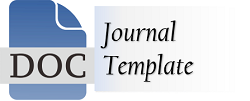Metabolic Responses to Exercise Across Different Age Groups: A Literature Review
DOI:
https://doi.org/10.31599/nz3jk132Keywords:
Respons Metabolik, Olahraga, Usia, Pengeluaran Energi, Metabolisme LemakAbstract
Physical activity plays a vital role in maintaining metabolic health and preventing various chronic diseases such as obesity, type 2 diabetes, and cardiovascular disease. Metabolic responses to exercise vary across different age groups, influenced by physiological changes such as decreased muscle mass, insulin sensitivity, and aerobic capacity. This study uses a systematic literature review method by examining studies discussing metabolic changes during and after exercise in various age groups. Searches were conducted through databases including PubMed, ScienceDirect, Google Scholar, and Consensus using keywords such as metabolic response to exercise, age-related metabolic adaptations, and exercise and metabolism across lifespan. The studies analyzed included metabolic measurements such as oxygen consumption (VO₂), energy expenditure, insulin sensitivity, and fat and carbohydrate metabolism. The review showed that younger individuals generally have higher metabolic efficiency compared to older adults, although exercise benefits all age groups. Energy expenditure increases with exercise intensity, but no significant differences were observed across age groups during low to moderate intensity exercise. High-intensity interval training (HIIT) significantly increased fat oxidation in middle-aged adults. Additionally, older sedentary individuals exhibited higher postprandial triglyceride levels than younger or more active individuals. The timing of exercise also influenced metabolic responses: morning exercise was more effective in enhancing lipid metabolism, while afternoon workouts were more optimal for improving insulin sensitivity.
Downloads
References
Amaro-Gahete, F., De-La-O, A., Jurado-Fasoli, L., Sanchez-Delgado, G., Ruiz, J., & Castillo, M. (2020). Metabolic rate in sedentary adults, following different exercise training interventions: The FIT-AGEING randomized controlled trial. Clinical Nutrition. https://doi.org/10.1016/j.clnu.2020.02.001
Booth, F. W., Roberts, C. K., & Laye, M. J. (2012). Lack of exercise is a major cause of chronic diseases. Comprehensive Physiology, 2(2), 1143–1211. https://doi.org/10.1002/cphy.c110025
Finucane, F., Sharp, S., Purslow, L., Horton, K., Horton, J., Savage, D., Brage, S., Besson, H., Rolfe, E., Sleigh, A., Martin, H., Sayer, A., Cooper, C., Ekelund, U., Griffin, S., & Wareham, N. (2010). The effects of aerobic exercise on metabolic risk, insulin sensitivity and intrahepatic lipid in healthy older people from the Hertfordshire Cohort Study: a randomised controlled trial. Diabetologia, 53, 624–631. https://doi.org/10.1007/s00125-009-1641-z
Koemel, N., Sciarillo, C., Tomko, P., Bode, K., Jenkins, N., & Emerson, S. (2019). Impact of Age and Physical Activity on Postprandial Metabolic Responses (OR22-07-19). Current Developments in Nutrition, 3, nzz028.OR22-07-19. https://doi.org/https://doi.org/10.1093/cdn/nzz028.OR22-07-19
Kohl, H. W., Craig, C. L., Lambert, E. V., Inoue, S., Alkandari, J. R., Leetongin, G., & Kahlmeier, S. (2012). The pandemic of physical inactivity: global action for public health. The Lancet, 380(9838), 294–305. https://doi.org/https://doi.org/10.1016/S0140-6736(12)60898-8
Ngamsa-Ard, C., Chaunchaiyakul, R., Widjaja, W., & Pinthong, M. (2016). Metabolic Responses During Repeated Double-Hydraulic Resistance Exercises Among Different Aged-Groups. J Sports Sci Technol [Internet], 16, 65–73. https://he01.tci-thaijo.org/index.php/JSST/article/view/53526
Sallis, J. F., Bull, F., Guthold, R., Heath, G. W., Inoue, S., Kelly, P., Oyeyemi, A. L., Perez, L. G., Richards, J., & Hallal, P. C. (2016). Progress in physical activity over the Olympic quadrennium. The Lancet, 388(10051), 1325–1336. https://doi.org/https://doi.org/10.1016/S0140-6736(16)30581-5
Sato, S. (2023). Run For Anti-Aging: Exercise Timing Specifies Metabolic Responses. In Innovation in Aging (Vol. 7, Issue Suppl 1, p. 512). https://doi.org/10.1093/geroni/igad104.1681
Shin, K., Kim, Y., Park, S., & Oh, J. (2011). The Change in Exercise Capacity , Cardiac Structure and Function in Pre-Metabolic Syndrome Adults. J. Exp. Biomed. Sci, 17(4), 321–328. https://www.bslonline.org/journal/download_pdf.php?spage=321&volume=17&number=4
Downloads
Published
Issue
Section
License
Copyright (c) 2025 Ayman Faiz Simatupang, Muhammad Ridoh Saragi, Hadsen Daris Pinem, Nimrot Manalu

This work is licensed under a Creative Commons Attribution 4.0 International License.






.png)







